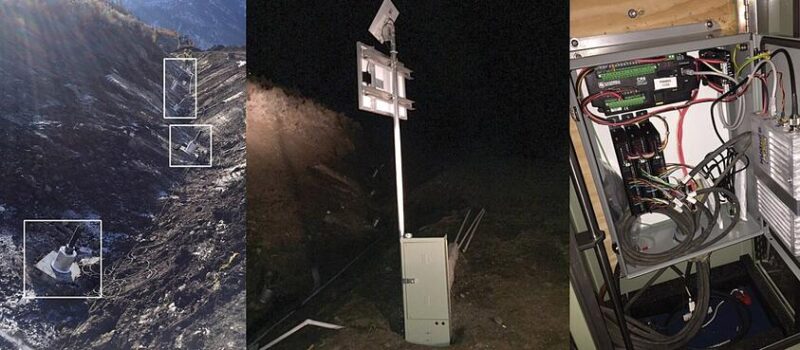Successful Results
Location: North East of Lillooet, BC Canada
Reliable and accurate data recorded at the desired intervals is transmitted to the customer’s control station via satellite modem, on a daily basis, where up to 20 users can log with different access levels to view the data simultaneously. The obtained data helped improve decision-making by managing risks, improving safety, and optimizing designs.
Background
Highway 99 is the main thoroughfare between the cities of Kamloops and Lillooet. It is integral to the local and surrounding economies and to the Xaxli’p community. It is managed by British Columbia’s Ministry of Transportation and Infrastructure (MoTI).
Scope/Objective
The one million cubic meter “Ten Mile Slide” is approximately a 200m wide x 300m long area intersecting the highway and a railway. The Ministry completed the design and planned for construction in this section to implement stabilization of the slopes and reconstruction of the highway.
Challenges
The active slide zone moves an average rate of 6-7mm/day. A reliable and efficient way to remotely monitor the soil anchors, in real time, was needed.
Solution
The stabilization solution consists of 275 soil anchors and a pile retaining wall with tie-back anchors. Before construction could commence on the final stabilization project, ongoing movement required the installation of 30 soil anchors. Slide movement was reduced but anchor retensioning was required due to to continuing slope displacements. Con-Tech Systems offered RST Instruments’ Vibrating Wire Load Cells and FlexDAQ Data Logger System to monitor the load on 11 soil anchors. RST’s GeoViewer software was used for real-time data analysis and presentation.
Benefits
Each vibrating wire load cell measures the evenly distributed load in the anchor, GeoViewer automatically plots the readings recorded on FlexDAQ logger. Reliable and accurate data is then recorded at the desired intervals and transmitted to the control station at the BCMOT headquarter via satellite modem, on a daily basis, where up to 20 users can log with different access levels to view the data simultaneously. Satellite transmission was used since cellular connection was unavailable. Load cell data was recorded every 8 hours and downloaded once per day.
PARTNERS FEATURED IN THIS SUCCESS STORY
BC Ministry of Transportation and Infrastructure







